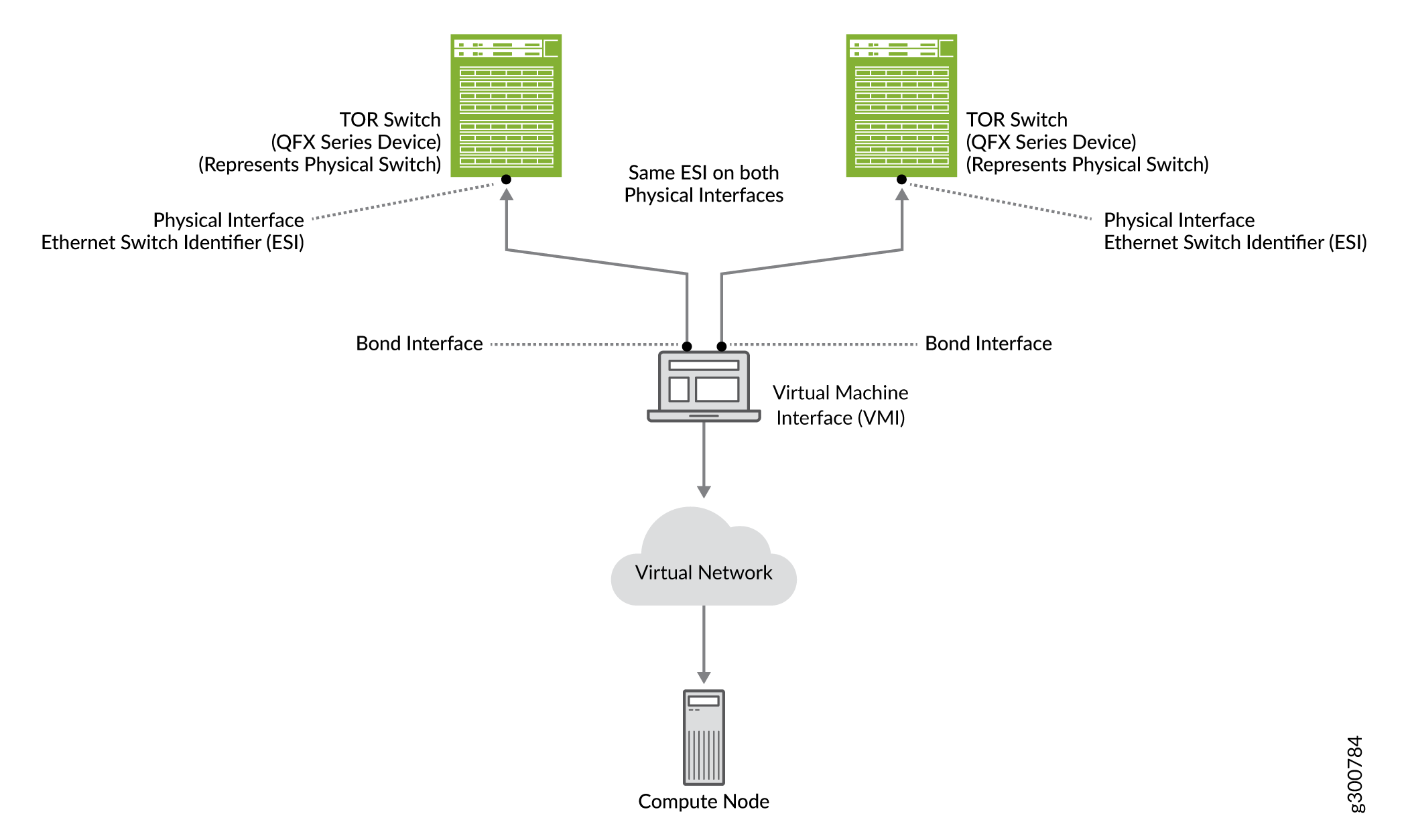LAG and Multihoming Support
Bare metal servers connect to multiple TORs to establish redundancy (MLAG/multihomed configurations). Also, depending on the port bandwidth on the TOR and the NICs on the bare metal servers, multiple ports can be utilized to connect a bare metal server to the TOR (LAG configurations). These interfaces are also called as bond interfaces. On bonded interfaces, LACP protocol is enabled by default.
In LAG configuration, the two physical interfaces on the TOR switch (a QFX Series device) become members of a link aggregation group (LAG). The LAG connects to the aggregated Ethernet (AE) interface, which is again a physical interface that connects to the logical interface. The logical interface is connected to the virtual machine interface (VMI), which is connected to the virtual network (VN). The VN is connected to the node, which is the logical representation of a bare metal server.
In a multihomed configuration, a single port on a BMS connects to the physical interfaces on two QFX devices. The QFX devices have one physical interface each, both having the same Ethernet switch identifier (ESI). The physical interfaces are assigned the same ESI to enable the QFX device to recognize the interface as a multihomed interface. Figure 1 shows how BMS is connected to a TOR switch.
Contrail Networking Release 21.3 supports Layer 3 multihoming feature to provide high availability and load balancing of Contrail traffic without the MC-LAG or bond interfaces. For more information on Layer 3 multihoming, see Layer 3 Multihoming.

Change History Table
Feature support is determined by the platform and release you are using. Use Feature Explorer to determine if a feature is supported on your platform.
